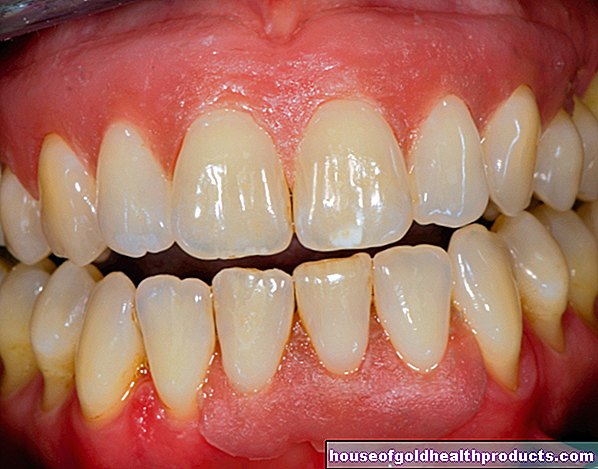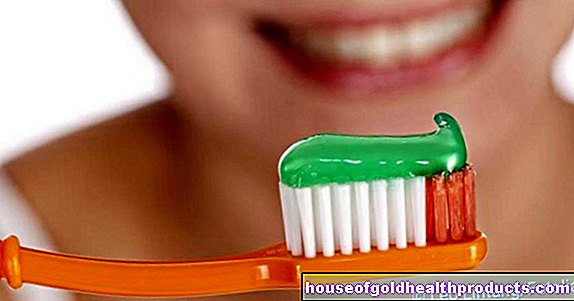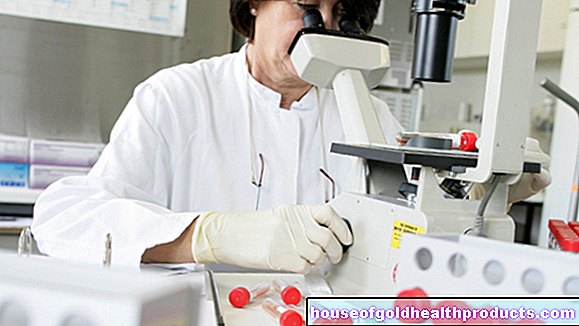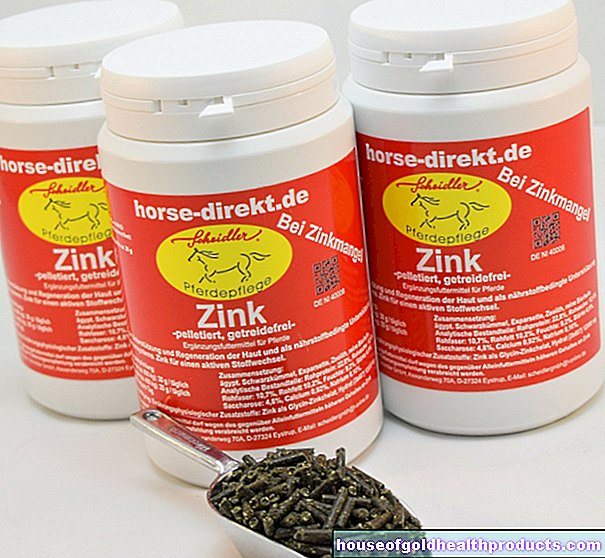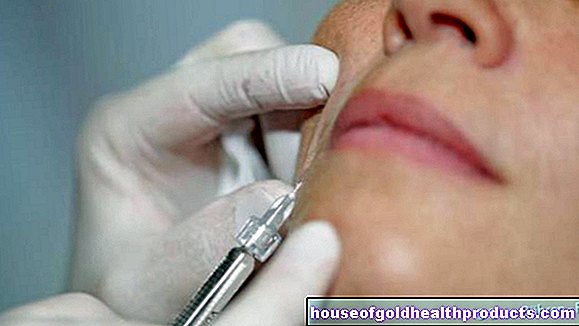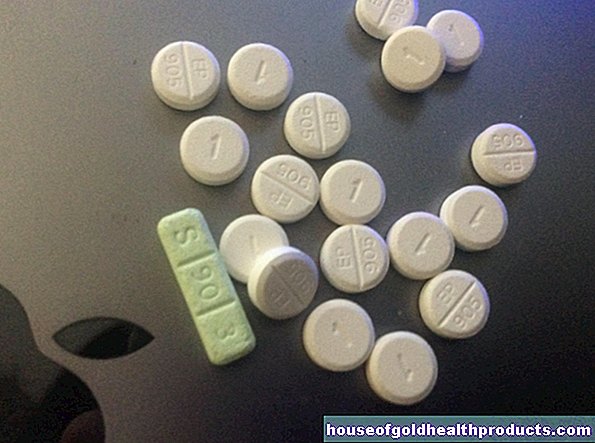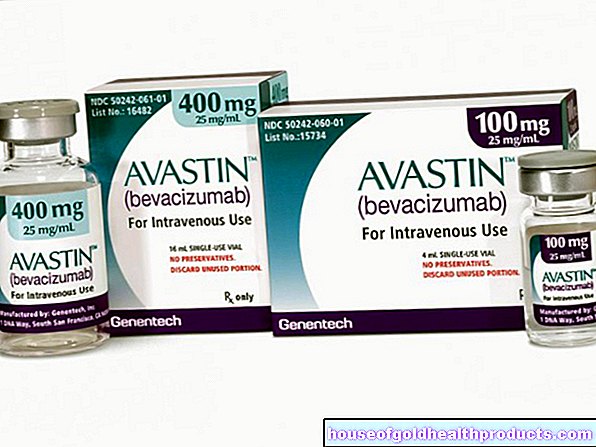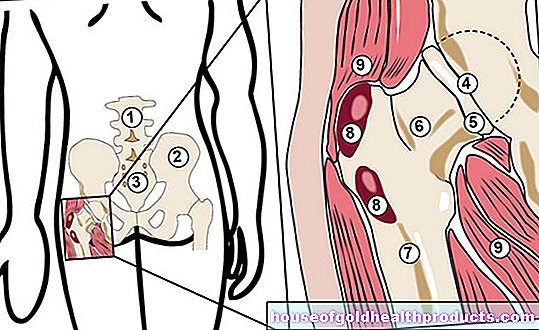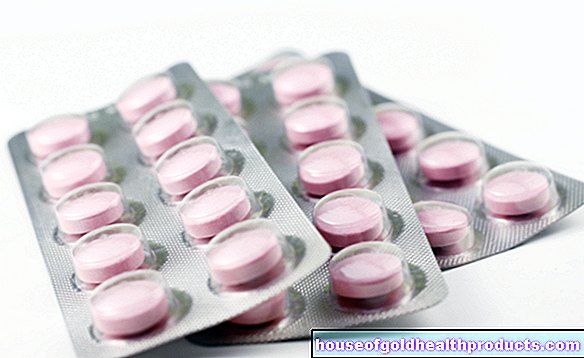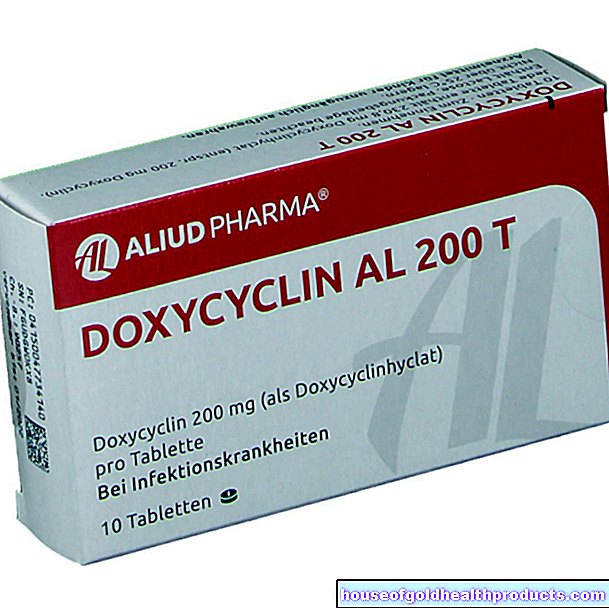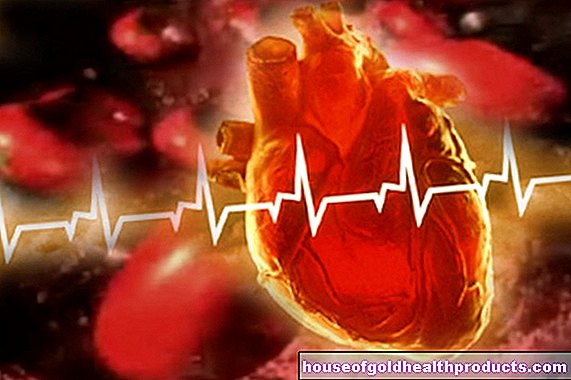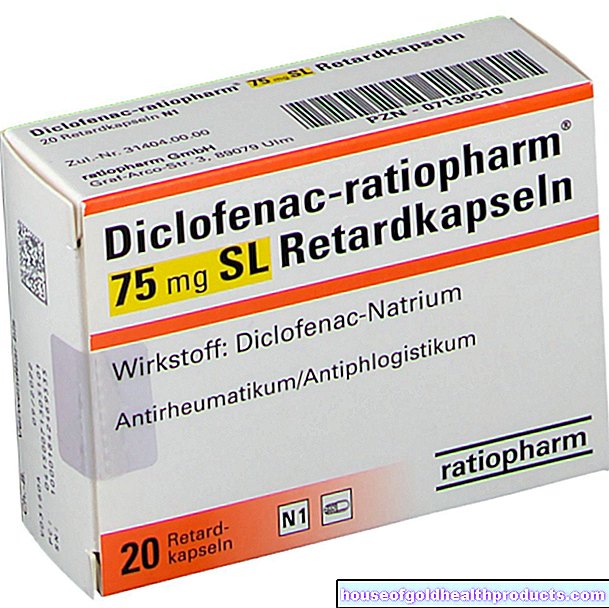Toxic shock syndrome
Astrid Leitner studied veterinary medicine in Vienna. After ten years in veterinary practice and the birth of her daughter, she switched - more by chance - to medical journalism. It quickly became clear that her interest in medical topics and her love of writing were the perfect combination for her. Astrid Leitner lives with daughter, dog and cat in Vienna and Upper Austria.
More about the experts All content is checked by medical journalists.Toxic shock syndrome (TSS) is a sudden and life-threatening complication caused by a bacterial infection. If left untreated, the TSS leads to multiple organ failure. It often affects young women who use tampons. Read here how it occurs and which symptoms occur!
ICD codes for this disease: ICD codes are internationally recognized codes for medical diagnoses. They can be found, for example, in doctor's letters or on certificates of incapacity for work. A48

Brief overview:
- What is Toxic Shock Syndrome? Acute and life-threatening infection which, if left untreated, leads to multiple organ failure. The TSS is often associated with the use of tampons.
- Causes: bacterial infection with Staphylococcus aureus and Streptococcus pyogenes
- Risk factors: Young age, staphylococcus colonization of the vagina, use of high-absorbency tampons, long period of the tampon in the vagina
- Symptoms: Sudden and persistent fever above 39 ° C, headache, drowsiness, sharp drop in blood pressure up to circulatory and multiple organ failure
- Diagnostics: typical symptoms, evidence of bacteria
- Treatment: Immediate intensive medical treatment, disinfection, antibiotics, fluids, control of organ function
- Prevention: Careful menstrual hygiene
What is Toxic Shock Syndrome?
Toxic Shock Syndrome (TSS) is an acute and life-threatening illness caused by toxins from two types of bacteria. TSS used to be considered "tampon disease". Tampons actually promote the development of a TSS, but are not solely responsible for it. The bacteria that cause the disease (streptococci and staphylococci) can also enter the body via other routes and trigger a toxic shock. The term “syndrome” describes that several typical symptoms occur at the same time in TSS.
It is typical for toxic shock syndrome that it progresses rapidly and, if left untreated, causes severe organ damage up to multi-organ failure. It is all the more important to know the symptoms and to call for medical help at the first signs.
frequency
TSS can occur in women, men, and children, but it predominantly affects younger women. According to the RKI, around 92 percent of all cases described so far occurred in women (average age: 23 years) who used tampons during their menstruation. Overall, however, the TSS is very rare: it is estimated that three to six out of 100,000 women develop it every year.
How does toxic shock syndrome develop?
Toxic shock syndrome is caused by toxins from two types of bacteria:
- Staphylococcus aureus (in most cases)
- Streptococcus pyogenes (rare)
Both types of bacteria are widespread and occur naturally in small amounts on the skin and mucous membranes (such as in the nose and vagina) in many people without causing any symptoms of the disease. The "colonization" with these bacteria alone does not pose a health risk.
The natural skin and mucous membrane barrier ensures that the bacteria do not get inside the body and multiply there. In addition, the immune system forms defense substances (antibodies) against the pathogens and thus keeps them under control. Basically, the higher the age, the lower the likelihood of streptococcal and staphylococcal infections. In later adulthood, around 90 percent of all people have developed antibodies against it.
A TSS only develops when the immune system is confronted with a particularly large number of staphylococci or streptococci, but has not yet come into contact with them and therefore has not yet developed antibodies against them. The immune system is then unable to neutralize the pathogen.
How do the pathogens get into the body?
Staphylococci and streptococci can get inside the body in different ways and multiply there.
Skin wounds or infections: Wounds or infections of the skin disrupt the natural skin barrier. The pathogens enter the body unhindered and multiply there. Triggers are, for example, injuries to the skin or surgical wounds, infections from burns or insect bites.
Mucous membranes: The same applies to the mucous membranes, they also form a natural barrier to ward off pathogens. Injuries (which occur when using menstrual cups, for example) or infections of the vaginal mucosa (after birth, in the puerperium) allow bacteria to penetrate the skin more easily. Tampons disturb the balance of the vaginal flora by removing magnesium from the mucous membrane. Staphylococci can multiply more easily in a magnesium-poor environment.
Why are streptococci and staphylococci so dangerous?
Streptococci and staphylococci are bacteria that produce toxins. These poisons are also called "superantigens". Compared to "normal" antigens (pathogens), they trigger an excessive and uncontrolled immune response by causing immune cells (T cells) to release excessive messenger substances (cytokines). These ultimately cause strong inflammatory reactions in all organ systems, which in turn are responsible for the toxic shock.
Risk factors
Risk factors for TSS include:
- Untreated strep or staph infections (such as skin wounds, vaginal or sinus infections)
- Younger age: TSS is particularly common in younger, previously healthy women. Doctors assume that the cause is the immature immune system.
- Pre-existing bacterial colonization of the vagina: In some women, staphylococci settle on the vaginal mucosa without causing discomfort. If the vaginal flora is out of balance (for example in the case of a vaginal infection), the staphylococci get out of hand and can cause problems.
- Use of highly absorbent tampons. In order to be able to absorb as much blood as possible, these often contain synthetic fibers instead of pure cotton. Although these are particularly absorbent, they also offer bacteria ideal conditions to multiply.
- Tampons or menstrual cups that are left in the vagina for too long or forgotten.
- Contraceptive sponges, membranes, or diaphragms.
How do I recognize a TSS?
Toxic shock syndrome develops within a few hours. The TSS typically starts very suddenly with a high fever above 39 ° C. In addition, there are symptoms that initially make you think of a cold or flu. These include, for example, headache and muscle pain, nausea, vomiting or diarrhea.
The disease usually progresses very quickly, the organism is in a state of shock due to the bacterial toxins: the blood pressure drops sharply, which becomes noticeable through increasing weakness and drowsiness. The sharp drop in blood pressure leads within a few hours to days to the fact that the internal organs are no longer adequately supplied with blood. There is a risk of serious functional disorders (impaired kidney function, acute respiratory distress syndrome, coma) up to multi-organ failure. In around ten percent of those affected, a sunburn-like rash develops after one to two weeks, especially on the palms of the hands and soles of the feet.
Call an ambulance at the first sign of TSS, especially if you are menstruating and using tampons or menstrual cups!
diagnosis
The TSS is a condition that requires rapid diagnosis. The doctor usually provides them on the basis of the typical symptoms and the pathogen detection.
Assessment of symptoms
The diagnosis is certain when it is established that at least three organ systems are affected. It can be:
- Gastrointestinal tract (vomiting, nausea, or diarrhea)
- Muscles (pronounced muscle pain with correspondingly changed blood values for creatinine or phosphokinase)
- Redness of the mucous membranes (throat, vagina, conjunctiva)
- Kidneys (increased levels of urea or creatinine in the blood, pus in the urine, or urinary tract infection)
- Liver (increased liver values in the blood such as transaminases, bilirubin or alkaline phosphatase)
- Central nervous system (disorientation, impaired consciousness)
Pathogen detection
In addition, the doctor tries to identify the bacterium causing the disease. To do this, he takes swab samples from the suspicious infection site (wound, nose, vagina) and examines them for the presence of the pathogen.
In around 60 percent of all TSS cases that are triggered by streptococci, the pathogen is also found in the blood, in staphylococcal infections this is only the case in five percent.
Further investigations
The doctor uses magnetic resonance imaging (MRI) or computed tomography (CT) to locate foci of infection inside the body (for example an abscess).
How is the TSS treated?
Toxic shock syndrome always requires immediate intensive medical treatment. The sooner it is treated, the better the chances of a complete cure.
Removal of the triggering cause: If a tampon (or menstrual cup) has triggered the TSS, it must be removed immediately. The same applies to wounds: the doctor removes the source of infection by cleaning and disinfecting the wound. If the focus is inside the body - such as an abscess - surgery may be necessary.
Combating bacterial infection: Antibiotics work against bacteria by killing them or by blocking their further reproduction. With TSS, the patient is usually given a combination of beta-lactam antibiotics and the active ingredient clindamycin. Sometimes it is necessary to switch to other antibiotics.
Circulatory stabilization: It is particularly important to stabilize the circulatory system again. To raise the blood pressure, the patient is given fluids via an infusion. If necessary, the blood vessels are also narrowed with drugs such as vasopressin.
Neutralization of bacterial toxins: So-called immunoglobulins help to render the toxins produced by bacteria ineffective.
Inhibition of the excessive immune system: Corticoids have a strong anti-inflammatory effect and help to bring the excessive reaction of the immune system under control.
Maintenance of organ functions (liver, kidneys, heart, lungs, blood): If internal organs have already been attacked by the bacterial toxins, the doctor tries to maintain their function. The treatment depends on the respective organ: If the lungs are involved (such as in acute respiratory distress syndrome), artificial ventilation is sometimes necessary, and functional disorders of the kidneys may require dialysis.
prevention
General prevention
To prevent TSS, it is important to treat wounds or infections that involve streptococci or staphylococci in a timely manner. These include, for example, skin wounds, vaginal infections after childbirth or infections after burns.
Tips for girls and women who use tampons or menstrual cups
- Always wash your hands before and after inserting the tampon or menstrual cup.
- Alternate between using tampons / menstrual cups and sanitary towels.
- Change tampons regularly every four to eight hours.
- Change the tampon at bedtime and right after getting up.
- Avoid particularly absorbent tampons.
- If possible, use the smallest tampon size that fits your menstrual flow and change the tampon more often.
- If you have ever had a TSS, it is better not to use tampons.
- Use only undamaged tampons in their original packaging.
- Thoroughly rinse the blood from the menstrual cup with running water.
- Boil the menstrual cup and storage container after the bleeding has stopped.
- Replace the menstrual cup if it is damaged or if it emits an unpleasant odor.
forecast
Basically, the earlier a TSS is diagnosed and treated, the more favorable the prognosis. It also depends on the type of bacteria that caused the disease. A TSS caused by staphylococci is usually less severe, 97 percent of patients recover completely.
With streptococcal TSS, the prognosis depends primarily on the age of the patient: while children survive the disease well in most cases, the survival rate in adults is significantly lower.
Tags: drugs unfulfilled wish to have children desire to have children